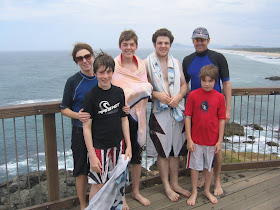 John Corvino has an insightful article over at the Independent Gay Forum in which he ponders: “Why are [the] opponents [of gay people and same-sex marriage] obsessed with ‘butt-sex’?”
John Corvino has an insightful article over at the Independent Gay Forum in which he ponders: “Why are [the] opponents [of gay people and same-sex marriage] obsessed with ‘butt-sex’?”Good question. Honestly, I sometimes feel that, more often than not, it is those who are supposedly aghast at the idea of same-sex relations who seem the most fixated on writing and talking about such relations – albeit in a totally reductionist and thus dehumanizing way.
Corvino lists some recent examples of this type of fixation. For instance, he notes that a conservative pastor recently complained on his blog that gays “expect us to approve of butt sex and call it marriage.”
In the following excerpt from his article, “Gay Sex Isn’t Weird. Sex Is,” Corvino responds to the various “butt-sex”-fixated complaints of the anti-gay crowd.
_________________________
Sex makes no sense in the abstract. But then you have urges, and you eventually act on them, and what once seemed weird and gross becomes . . . wow.
Our opponents recognize this in their own lives, but they can’t envision it elsewhere. It’s a profound failure of moral imagination – which is essential for empathy, which is at the foundation of the Golden Rule.
How can one “love thy neighbor as thyself” without any real effort to understand thy neighbor?
Our opponents contemplate our lives, our love, our longing, and what do they see? “Butt sex.” Such obtuseness is depressing.
Of course, not all gays engage in “butt sex” – some of us never do – and not only gays engage in “butt sex.”
Of course, most of what we do in bed is exactly the same as most of what they do in bed: cuddling and touching and caressing and kissing and sucking and rubbing and so on. (Not to mention sleeping, which when shared regularly can be beautifully intimate as well.)
What we do is the same not just in terms of formal acts. It’s the same in terms of being weird, and silly, and messy, and sublime.
Yes, Virginia, we make funny faces when we come, too.
It’s always easier to criticize the weirdness in others than to confront the weirdness in the mirror. (Perhaps that’s why mirrors in the bedroom are thought to be kinky.)
Our opponents take anxiety about sex – a natural and virtually universal human phenomenon – and wield it as a weapon against us. Shame on them.
As for the marriage-equality fight, what do you say to someone who thinks that we expect her “to approve of butt sex and call it marriage”?
Thankfully, another poster responded to that one more effectively than I ever could.
The respondent described herself as a lifelong Christian, daughter of a conservative minister, and “personally against gay marriage but passionate about gay civil rights.” (This description will strike some as paradoxical, but bravo to her for understanding the difference between personal beliefs and public policy.)
She then warmly depicts a gay couple she knows who have adopted two special-needs children. The children, she writes, “RADIATE happiness at each other, their parents, and the people around them. Somehow ‘butt sex’ doesn’t seem to neatly contain all the emotions, commitment, and wondrous devotion that their parents’ relationship has provided them with.”
She concludes by chiding her fellow Christian, “Please think carefully before you speak.”
Amen to that.
To read John Corvino’s article in its entirety, click here.

See also the previous Wild Reed posts:
• Real Holiness
• Making Love, Giving Life
• The Many Manifestations of God’s Loving Embrace
• Relationship: The Crucial Factor in Sexual Morality
• What is a “Lifestyle”?
• The Non-Negotiables of Human Sex
• Joan Timmerman on the “Wisdom of the Body”
• A Wise and Thoughtful Study of Sexual Ethics
Image 1: “Relationship” by Raphael Perez.
Image 2: Peter Foss.




























































